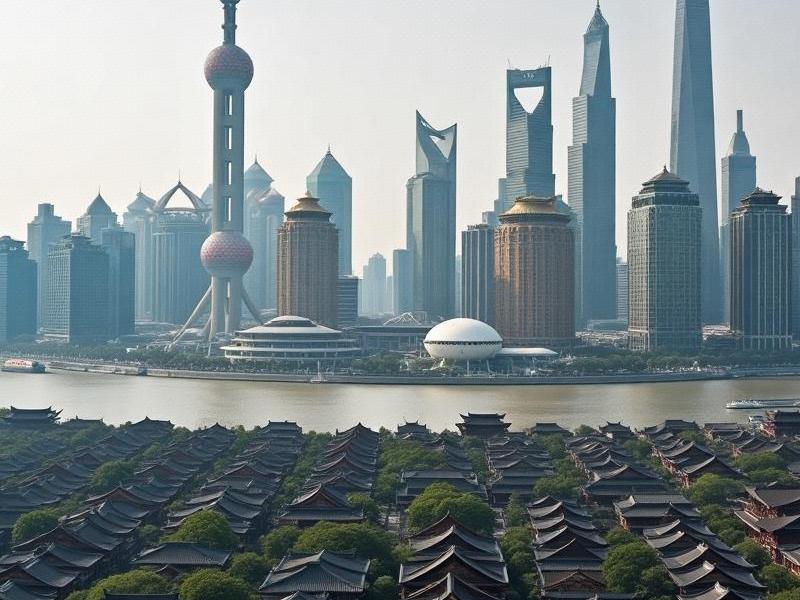Shanghai: Where Futuristic Innovation Meets Timeless Traditions
⏱ 2025-05-06 08:43 🔖 爱上海千花网
📢0℃

The Pulsating Heart of China's Economy
Shanghai solidified its position as China's financial nucleus with the 2023 inauguration of the Lujiazui Twin Towers, housing 57 multinational corporate headquarters. The city's GDP grew by 5.8% in Q1 2024, driven by its semiconductor industrial cluster now producing 18% of the world's advanced chips. The Lingang Free Trade Zone recently attracted $12.7 billion in AI and quantum computing investments, while the upgraded Shanghai Stock Exchange STAR Market achieved $583 billion in annual tech IPO valuations.
Cultural Confluence in the Bund District
Beneath the neon glow of Pudong's skyscrapers, the restored Shikumen alleys of Xintiendi host avant-garde art installations within traditional stone-gate houses. The 2024 Shanghai Biennale showcased mixed-reality exhibitions where visitors interact with holographic projections of 1930s jazz singers. At the intersection of heritage and modernity, the newly reopened Longhua Temple complex integrates augmented reality for Buddhist meditation experiences, attracting 2.3 million tech-savvy pilgrims annually.
爱上海最新论坛 Green Revolution in Urban Planning
Shanghai's ecological ambitions materialize through its 2040 Carbon Neutrality Blueprint. The Chongming Island Eco-City prototype now generates 89% of its energy through tidal power and vertical-axis wind turbines. The Huangpu Riverfront Transformation Project created 48km of "sponge city" embankments capable of absorbing 15,000 cubic meters of stormwater hourly. Electric vehicle adoption reached 41% of total registrations in 2023, supported by 57,000 wireless charging road segments.
Yangtze River Delta Synergy
The Shanghai-Suzhou-Nantong Railway (2025) will shrink intercity travel to 22 minutes, accelerating the "1-Hour Economic Circle" connecting 26 cities. Joint environmental monitoring systems now track air quality across 35,000 square kilometers, while the Delta Quantum Computing Consortium established China's first photonic quantum computing cloud platform. Collaborative vaccine research between Shanghai's Zhangjiang Biotech Base and Hangzhou's Medical Valley has yielded 3 FDA-approved cancer immunotherapies.
上海夜生活论坛
Future-Proofing the Megacity
Pilot projects for 6G-enabled autonomous ferries commenced on the Huangpu River in March 2024, while the Hongqiao Central Business District unveiled Asia's first underground logistics network using magnetic levitation containers. The city's AI Governance Institute recently released ethical guidelines for generative AI adoption, balancing innovation with data security concerns. As Shanghai prepares for the 2035 World Urban Expo, its blueprint emphasizes human-centered smart city development through neural network-inspired urban planning models.
Preserving Cultural DNA
上海品茶网 The Shanghai Archives' Digital Resurrection Project has recreated 137 vanished historical landmarks in VR, including the 1924 Great World Entertainment Center. Intangible heritage finds new life through AI-powered Jiangnan silk embroidery robots that replicate ancient stitching patterns with 0.02mm precision. The 2024 Municipal Cultural Strategy allocates $2.3 billion for protecting 94 historical neighborhoods while installing smart infrastructure, ensuring Shanghainese cultural identity evolves without dissolution.
Challenges and Opportunities
Despite its 0.68 Gini coefficient reflecting urban-rural balance, Shanghai faces pressure from population aging (24% over 60 by 2030) and land scarcity. The newly approved Greater Shanghai 2050 Plan proposes floating neighborhoods in Hangzhou Bay and vertical farming towers producing 30% of vegetable supplies. As climate change brings stronger typhoons, the city's "Resilient Coastline" initiative combines Dutch delta technology with AI-powered flood prediction systems.
The Road Ahead
Shanghai's metamorphosis continues through the lens of sustainable hyper-growth. The upcoming 2025 Urban Computing MegaProject will integrate quantum computing with urban management systems, aiming to reduce traffic congestion by 40% and emergency response times by 58%. As the city evolves into a "phygital" metropolis blending physical infrastructure with digital twins, it maintains its unique alchemy of East-West dynamism – forever reshaping global urban paradigms while preserving the soul of old Shanghai.
Shanghai Style Revolution: How Local Women Are Crafting a New Global Beauty Paradigm《边界消融时:上海与周边城市的"同城化"实验》Shanghai Showgirls: Entertaining Life on the Edge of CultureShanghai and the Surrounding Area: A Dynamic Hub of Economic and Cultural ExchangeShanghai's Nightlife Evolution: The New Era of Entertainment Clubs in China's Global CitySilicon Bund: Shanghai's Ambitious Quest to Become Asia's Tech Capital《共饮一江水:长三角生态绿色一体化发展示范区三年记》Shanghai's Nightlife Evolution: How Entertainment Venues Are Redefining Urban Leisure in 2025Shanghai's Neuro-Aesthetic Singularity: Where Jiangnan Silk Algorithms Rewrite Quantum GlamourNeon Renaissance: How Shanghai's Elite Clubs Are Redefining China's Nightlife Economy

